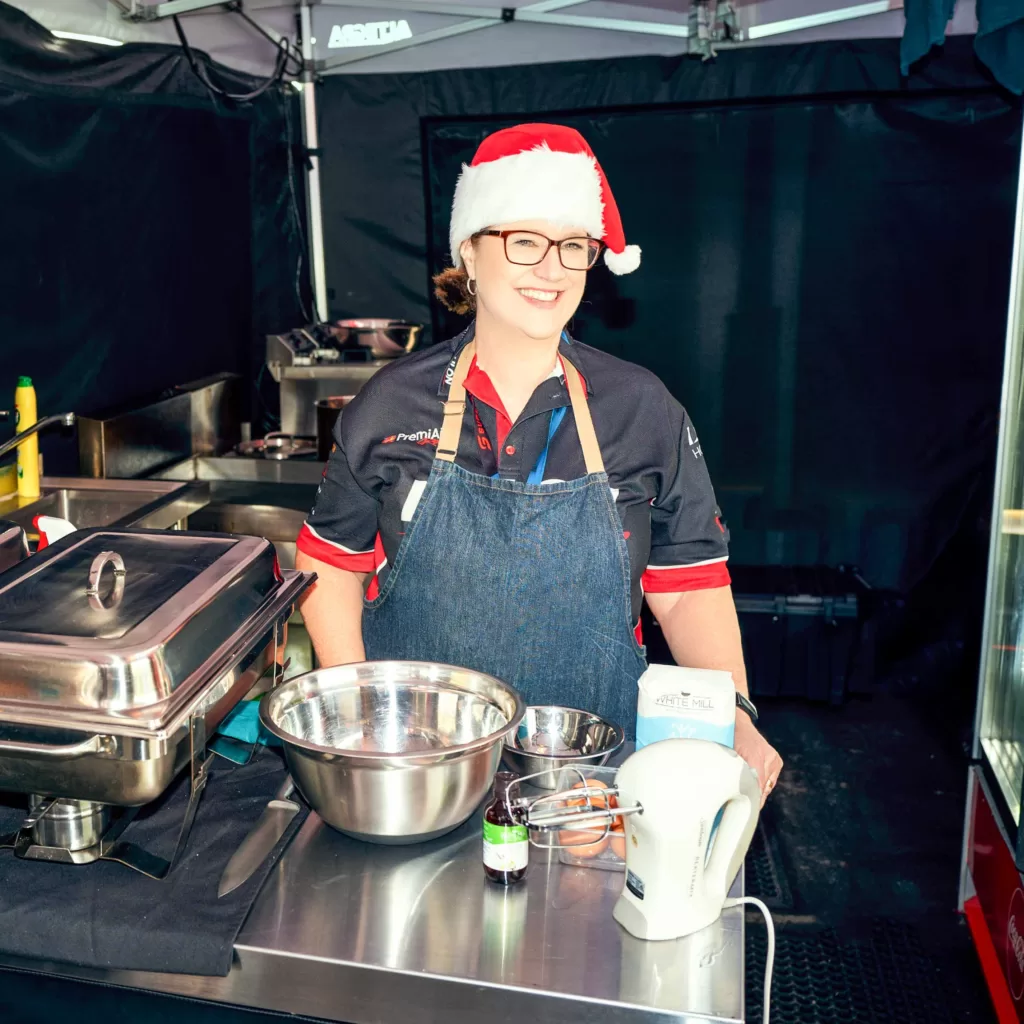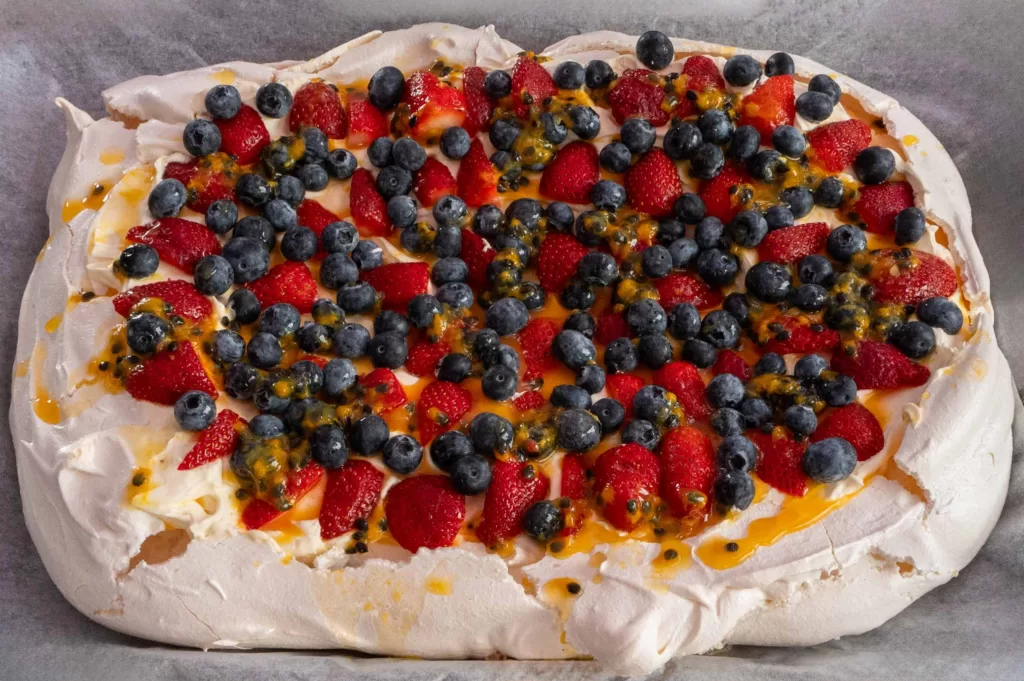🍽️🏁 **Feast Like a Racing Team with Chef Lesley’s Holiday Recipe!** 🎅🍲
 Throughout the year, our amazing Team Chef, Lesley, has been fueling us with her delightful and nutritious dishes at every race meeting. Now, she’s sharing one of her favourite holiday recipes for you to enjoy at home! 🌟👩🍳
Throughout the year, our amazing Team Chef, Lesley, has been fueling us with her delightful and nutritious dishes at every race meeting. Now, she’s sharing one of her favourite holiday recipes for you to enjoy at home! 🌟👩🍳
Get ready to add some race team flair to your festive table! Whether you’re a culinary pro or just starting out, this recipe will impress. 🤤
“When I think of Christmas and hot summer days by the pool or at a BBQ, I think of a Pavlova piled high with fresh cream, summer berries and passionfruit.” Lesley said
“The origins of the Pavlova is subject to debate with both Australians and New Zealanders claiming this delicious dessert as their own.
According to Wikipedia, the Pavlova is widely considered to have been created for the famed Russian ballerina Anna Pavlova in the 1920’s when she toured Australia and New Zealand.
Other reports that have been hard to verify, attribute the dessert’s origin to a Perth based chef in 1935 who was rumoured to have said he created the dessert to be as light as a Pavlova.
Regardless of its origins, the Pavlova is a delightful summer dessert. I hope you enjoy it as much as I do.”
Ingredients Base
6 egg whites 2 cups castor sugar 1.5 teaspoons white vinegar 1.5 teaspoons vanilla paste Topping 600mls thickened cream 2 teaspoon icing sugar 1 teaspoon vanilla paste Assorted fresh berries & passionfruit.
Method Base
1 . Separate egg whites from yolks, taking care not to get any yolk into the egg whites. Beat the egg whites on high speed until they form stiff peaks.
2 . Gradually add castor sugar (1 tablespoon at a time) to the egg whites so that the sugar is dissolved into the egg whites between additions. Beat at high speed.
3 . Once all the sugar is added, press a small amount of the mixture between your fingertips. If the mixture feels grainy continue beating for another 1-2 minutes to dissolve any residual suga r.
4 . Gently fold vanilla and vinegar through the mixture with a spatula. Pile the mixture onto a g reased tray lined wi th ba king paper. Leave a small crater in the centre of the pavlova.
5 . Bake the pavlova at 140oC for 45 minutes, then turn off the heat and leave in oven for 1 hour to allow the outer shell to dry out. Remove and cool to room temperature before decorating.

Topping
1 . Add a teaspoon of vanilla and 2 teaspoons of icing sugar to the thickened cream. Beat the cream until stiff peaks form.
2 . Spread the cream over the cooled pavlova shell and decorate with fresh berries and passionfruit.
3 . Serve chilled . Enjoy.
Notes Make sure your bowl and beaters are clean, as any residual fat or oil from previous bakes may impact on how your eggs whites turn out. Some Pavlova recipes add cornflour or cream of tartare to the egg whites to stabilise them before adding the sugar. Others may suggest beating the eggs at a lower speed. I find that it you have a good quality mixer, and you start with your eggs at room temperature, the addition of white vinegar is enough to stabilise the egg whites. Don’t worry if all the castor sugar doesn’t completely dissolve – this may crystalise on the outer parts of the base while cooking but will not affect the overall cook.





















